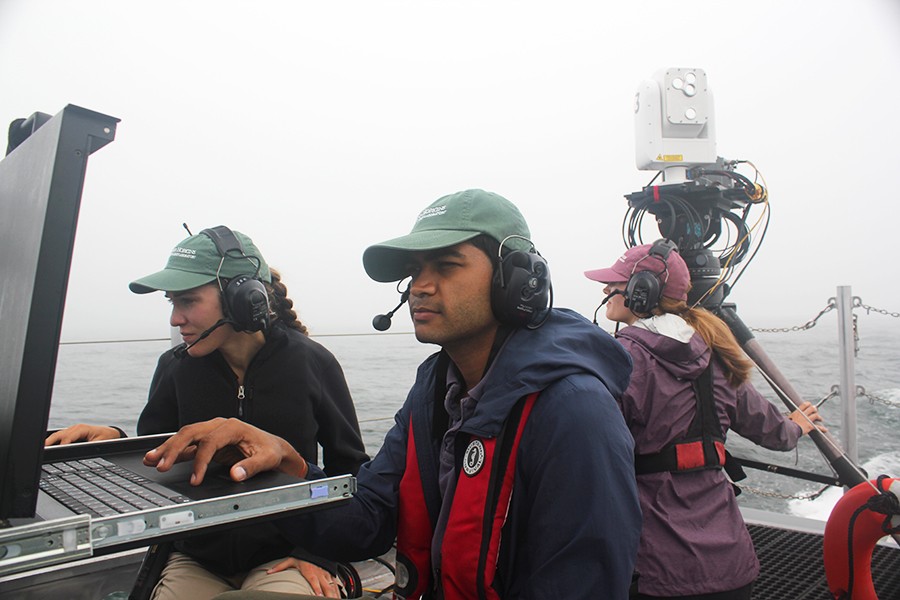A team of engineers from the Johns Hopkins University Applied Physics Laboratory has successfully demonstrated a high-bandwidth, free space optical communications system between two moving ships.
APL is the first organization to successfully operate such high-capacity optical communications capability—up to 10 gigabits per second—on the move, on board ships at sea, and in challenging near-shore environments.
"We demonstrated bandwidths that were several orders of magnitude higher than all current radio frequency communications capability on Navy vessels, and at longer ranges than previously demonstrated FSO technology for maritime applications," said Juan Juarez, technical lead for the team developing the technology. "This is the equivalent to having up to 2,000 users simultaneously watching high definition video streams across the optical link."
The demonstration was performed at the 2017 Trident Warrior Exercise, an annual event where sailors try out the newest innovations in naval warfare systems and provide feedback on those systems to commanders and developers.
Navy ships typically use radio frequency systems to communicate, but the Navy also looks for alternative means of communication in case—for technical, operational, and/or environmental reasons—radio transmission isn't available.
Free-space optical communication systems—which make use of wireless transmission to deliver optical data signals at high bit rates—offer a compelling alternative to conventional radio frequency and microwave communications by providing secure high data rates.
FSO demonstration systems previously built for defense applications have been too large, or they lacked the mobility, data rates, or ranges to be practical on naval platforms. APL's system overcomes many of these challenges.
Posted in Science+Technology
Tagged applied physics laboratory








